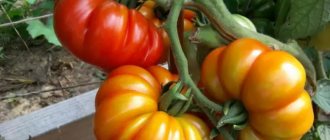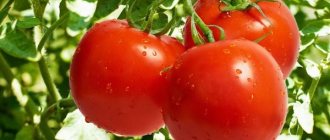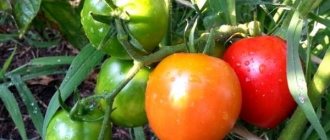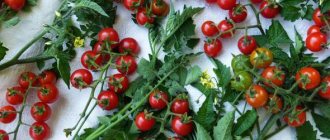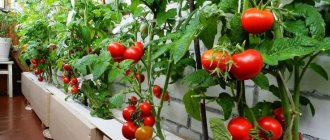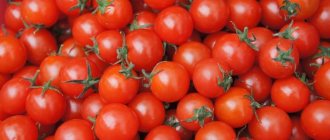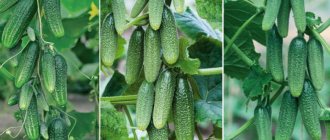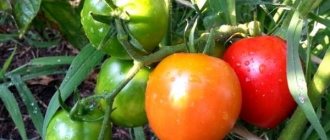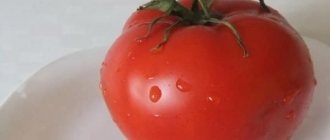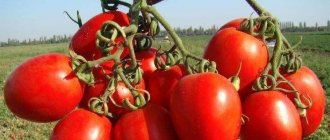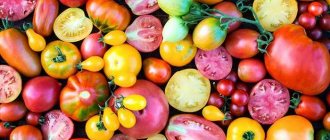The best varieties of cocktail tomatoes
Cocktail tomatoes are one of our favorite varietal groups and a new breeding direction.
They are much larger than cherry tomatoes, weighing 40-60 g (like a tennis ball), of various shapes and colors. They stand out for their excellent taste: sweet and aromatic. Universal purpose: used fresh, ideal for pickling in jars, sweet juice (cooked like a regular tomato, but without salt). The fruits are resistant to cracking and shedding and remain on the bunches for a long time. They are collected both as whole clusters and as individual fruits. And at elevated temperatures, which is very important in recent years, they are characterized by high fruit set. They are resistant to diseases, and in terms of productivity they often surpass even supergiant varieties! Due to their unpretentiousness, they can bear fruit even without staking and pinching.
They work well when grown on balconies and winter greenhouses.
Sort by: name (ascending | descending), price (ascending | descending), rating (ascending | descending)
Growing cocktail tomatoes - name and description of varieties and care
The fashion for cocktail tomatoes came almost immediately after the fashion for cherry tomatoes. Their advantage is high decorativeness, good yield and, most importantly, non-shattering fruits with durable, non-bursting skin.
Every gardener knows cherry tomatoes, or cherry tomatoes. They have small fruits weighing 15-30 g, mostly round in shape (although mini-cream, mini-fingers, mini-pears and mini-drops are also found). But tomatoes with slightly larger fruits weighing from 40 g to 60 g of various shapes and colors are called cocktail tomatoes. Tomatoes of this size are very convenient: you can take them to work and put them on the table as a buffet appetizer. They are also suitable in salads, and for whole-fruit canning and freezing they are simply irreplaceable: this size allows you to compactly place the fruits both in a jar and in a freezer drawer.
The beauty of the plant is given by the inflorescences of a characteristic shape - long and unbranched, symmetrical, strong, although there are also varieties with complex branched inflorescences. From 16 to 20 fruits are formed on each, and they are not required to be rationed.
By the way, you shouldn’t think that small-fruited tomatoes are low-yielding. For example, the yield of the mid-early indeterminate variety Patron
(suitable for open ground in the southern regions, but to the north it is better to plant it in greenhouses) under film covers reaches 9.7 kg/sq. m. The fruits are elegant, cylindrical, red, weighing 30-50 g.
EVERYTHING YOU NEED FOR THIS ARTICLE IS HERE >>>
IMPORTANT. The fruits of cocktail tomatoes ripen within one inflorescence almost simultaneously, which is important when harvesting in whole clusters.
The quality requirements for cocktail tomatoes are quite high. They must be uniformly and richly colored, durable, uniform in shape and size in the inflorescence and in no case cracked.
By type of growth, cocktail tomatoes are most often indeterminate (tall), but there are also determinate varieties
- for example,
Striped flight
, growing up to 1-1.5 m. Its fruits are very elegant - chocolate-burgundy balls with pronounced green stripes, each weighing 30-40 g, and up to 30 tomatoes can be formed in a long inflorescence. Medium-sized varieties are convenient, bear fruit abundantly in open ground.
Agricultural technology for cocktail varieties and hybrids is traditional. They, like other tomatoes, are grown through seedlings, which allows you to create the race in plant development necessary to obtain an early harvest. The optimal sowing time is early to mid-March. At this time, the lighting conditions are already good enough to produce high-quality seedlings. Sowing at an earlier date is not advisable.
The substrate needs to be porous and moisture-absorbing; it is convenient to use a ready-made peat-based substrate, but it is better not to use pure peat without additives. Seeds are placed in boxes to a depth of 1 cm, leaving a distance of 1.5-2 cm between them, covered with moistened sifted substrate to the depth of the grooves or slightly less.
The container with the seeds, covered with film, is kept indoors at a temperature of 24-26°, and after the first shoots appear, the cover is removed, moving the boxes towards the light. The temperature is reduced to 19-22°, and the plants are watered as the soil dries.
IMPORTANT. If the cotyledons remain on the seedling, the seeds were probably sown shallow. If this does happen, you should moisten the cotyledons from a spray bottle and carefully remove the peel.
Tomatoes peak when the first true leaf appears, using larger diameter cassettes or separate pots. After the plants have taken root, the first fertilizing is carried out with water-soluble fertilizers, the next fertilizing is carried out every 7-10 days. It is also permissible to constantly water the plants with a weak solution of mineral fertilizers. Good results are obtained by adding humates to mineral fertilizers.
Tomato Bobcat F1
Mid-season hybrid of Dutch selection.
Suitable for growing in greenhouses and open ground.
Determinate type plant. The bush is powerful, about 0.7 m high, well leafy (leaves are simple, large, dark green). Requires pinching and tying to a support; it is better to form it into one stem.
The hybrid is resistant to the main pests and diseases of tomatoes (especially verticillium and fusarium), tolerates heat well, does not like overwatering, and is responsive to fertilizing. Productivity is consistently high.
The fruits are large in size (150-300 g), bright red when ripe, flat-round, slightly ribbed at the stalk, with glossy skin and fleshy pulp. Not prone to cracking, homogeneous. The taste is good, salad-like, with noticeable sourness, the aroma is weak.
The tomato has a long shelf life and excellent transportability. The purpose is universal.
Cocktail tomatoes: planting and care
The soil in the garden where the tomato will grow all season should be fertile and rich in humus. For 1 sq. m requires 150-160 g of complex mineral fertilizers (only 60-70% is applied for basic tillage, and the remaining fertilizers are applied in the form of fertilizing during the growing season). It should be remembered that tomatoes consume the bulk of nitrogen and phosphorus before the fruit formation phase, but the greatest potassium consumption occurs during the period of fruit formation, filling and ripening of fruits.
IMPORTANT. You can reduce the fragility of stems and leaves when transplanting to a permanent place if you stop watering 1-2 days before.
At the time of planting, the seedlings should be about 45 days old. Planting pattern (depending on the variety) -40×60 or 50×60 cm. Overgrown, elongated plants are immediately tied up. The use of growth regulators has a positive effect on survival rate after planting, increases early yield, and reduces damage by gray rot.
Cocktail tomatoes require regular pinching - removal of side shoots emerging from the leaf axils. At the same time, the overall yield increases, because the stepson pulls some of the plastic substances onto itself and makes it difficult to form a crop on the main stem. Indeterminate varieties in the greenhouse are formed into one stem, semi-determinate and determinate varieties - into 2-3 stems.
Every 10-14 days, the plants, focusing on their condition, are fed with complex mineral fertilizers with the addition of humates. In August, tall varieties are pinched about 40 days before the planned end of the growing season. Despite its small size, the fruit of cocktail tomatoes takes about 40 days to form. Therefore, having estimated when the last harvest will be harvested, 6-9 inflorescences are left on the plant and the main stem is pinched, leaving 2 leaves above the last inflorescence. Disease resistance depends on the variety. For example, the early ripening and very decorative indeterminate Galapagos
. Its ovoid, bright red, glossy fruits weighing 35 g are collected in a cluster of up to 20 pieces, while the yield per plant can reach 3.5 kg. However, even when growing it, it is better to prevent the formation of dripping moisture on the plants.
The time-tested variety Chio-chio-san is also resistant to TMV. This is a mid-season indet recommended for greenhouses and open ground. A distinctive feature of the variety is a huge branched raceme, on which 50 or more pink plum-shaped fruits with an excellent dessert taste are formed. The yield of one plant is up to 4 kg.
Tomato is a moisture-loving plant. Its powerful root system allows it to be extracted, but the plants use water very sparingly. They consume the greatest amount of water during the period of ripening and fruiting, as well as during the period of fruit filling.
IMPORTANT. Adding compost to the soil reduces moisture consumption and reduces water consumption.
IMPORTANT. Do not overuse organic and nitrogen fertilizers during the season. Otherwise, the tomato may begin to fatten, forming many leaves with minimal or complete absence of fruits.
© Author: M. VASILYEVA, agronomist-consultant of the Gavrish Group of Companies
Varieties of cocktail tomatoes in alphabetical order
Rice. 2 Barberry F1 in mid-July: “He sits in the middle and is already supporting the ceiling with the top of his head. The cover doesn’t allow me to climb even higher, there aren’t enough sticks anymore, and it seems like it’s too early to pinch.” Aulchanka Photos
Rice. 3 Barberry F1
Rice. 4 “I liked the tomato variety from Popenko Golubika . They started well - in clusters, black medium-sized tomatoes in my Spartan conditions. The peel is almost black, the bottom, which side faces the ground, is orange when ripe. Very sweet". Photos of Tasyonok
Rice. 5 Sveta-nsk : “And I will never plant a Golden Drop . The cute appearance of the fruit is all that is good about it. Indeed, like droplets. When ripe, they are dull yellow. The taste is the most ordinary, the yield is not so hot. But the bush is truly dimensionless. It immediately reached the height of the greenhouse ceiling and flowed further. Stepchildren climb literally from everywhere: from the brushes between the tomatoes, along the entire length of the leaf veins, and from the axils of the leaves directly in bunches, 6-8 pieces at a time. I no longer go near these five bushes without scissors. I cut my hair like a hairdresser, because it is simply impossible to tear out all this wildly growing disgrace. There will be no more of this variety on my site.”
Rice. 6 inveo : “ Golden bullet - I didn’t understand humor at all. It seems that the seeds were correct, from “Seeds of the Ob Region”. The plants are stunted, there are few fruits, the fruits themselves are small and have a very average taste.”
Rice. 7 I_Natalka : “My Goldfish have outgrown me, in a week they grew good tomatoes. Now the main thing is that they grow up and mature.” Photo from August 1 Ya_Natalka
Siberian mothers notice that Goldfish outside, as it is late. Bugagashenki : “I liked the goldfish - tasty, plentiful. Beautiful. There is only one drawback - the mid-late variety. There’s a lot of ovary that never ripened.” Ratta : “This particular Goldfish does not mature on the street. The tomato is not at all early, but even closer to late.”
Anton's mom: “ The Mandarin duck from Gavrish. I didn’t get sick, there was no late blight at all, even after a hailstorm in the exhaust zone, I cleaned everything up at the end of September (autumn allowed it). There are a lot of fruits, oak ones, the taste is a la Sukhovsky State Farm, however, they lay there for a very long time. Too big for salting. Assorted cut only, for lecho, but the peel is tough. It was a pity for the place. But there were picture Mandarins in the seedlings. Of course, the summer is not very good, but it didn’t hurt the Golden Domes and Persimmon.” Rimm : Mandarin duck . It led into three trunks. In the greenhouse he is tall. Orange color, delicious. They grow for several years and are also delicious when pickled.”
Rice. 8 Mandarin duck . Photo Mom Anton
Rice. 9 Mandarin duck . Rimm Photos
Nadya: “One of my favorite cocktail varieties is Rocket . This is a determinant. It is possible both in the exhaust gas and in the greenhouse. Elongated, plum-shaped. They’re also good in pickles, a good size for jars.” Kuzya74 : “However, I would like to highlight the Raketa variety, they were frozen, they were black, I thought that’s it. However, they returned to normal and produced a very good harvest. The tomatoes are oval, small, the skin is thick, the inside is just like sugar, they are simply wonderful for pickling. I decided to take note of this variety.”
Rice. 10 Rocket . Nadya Photos
UralSZ : “ Pink snow, Aelita Agro . They grew up normally, there was enough for the grandchildren to feast on. They ate them right from the bush in the greenhouse. Well, there was still some left for canning.”
Rice. 11 Pink snow.
VZH&K: “ I didn’t really like the yellow cream doves: “ Sunny Bunny , from Ilyinichna ( Yellow Cream ) - sweet when fully ripe, but a little hollow, and is affected by crown rot.”
Rice. 12 Yellow cream (Sunny Bunny). Photo of the little dove
JuliaZa: “ Chio-chio-san is very productive, there are 30 or more fruits in a cluster, it is better to grow in two trunks (I tried only 1 and 2) and plant in the OG.” ZaNa: “I also want to mention Cio-Cio-San - there is just a huge amount on the bush, the clusters are healthy, you need to tie them up right away. The skin is thin. Fleshy. The tomatoes are a little larger than the red date.”
Rice. 13 Chio-chio-san . “Half of the brush has already been collected.” Photo by ZaNa
Rice. 14 “ A wonder of the world - both in the greenhouse and in the exhaust gas. The taste is average. But we are so tired, there are no words - they bore a lot of fruit, I’m just tired of them, and the fruiting is extended. But super frost-resistant! I lost a lot of varieties during the frosts in June 2011, but at least that’s okay! Great for pickling. Suitable for salad too. The brushes are huge, you can tie them up, otherwise they will break off. Average height." Nadya Photos
Share the names of your favorite cocktail tomatoes in the comments to the article! Have a rich harvest everyone!
Read also: Remontant raspberry is the best variety
Photos of seed packages are taken from open Internet sources. 03/15/17 Nadya Novosibirsk
What are cocktail tomatoes and which varieties are considered the best?
Cocktail tomatoes are new hybrid tomato varieties that have immediately gained popularity among farmers and consumers. They are less susceptible to rot, resistant to late blight and adapted to temperature changes. Thanks to their thick skin and relatively small size, they are convenient to store and easy to transport. They are valued for their versatility - they are equally good fresh, after canning, or in hot dishes. They are used, like cherry tomatoes, for decoration, but at the same time they are indispensable in haute cuisine - suitable for stuffing, making sauces and gravies.
Tomato Taman F1
Early maturing hybrid of Russian selection.
Suitable for growing in greenhouses and open ground.
Determinate type plant. The bush is powerful, about 0.8 m high, well leafy (leaves of the usual type, green). Requires pinching and tying to a support.
The hybrid is resistant to tomato mosaic virus, verticillium, fusarium, crown and root rot, and bacterial spot. Heat-resistant, stress-resistant. Productivity is consistently high.
The fruits are medium-sized (about 150 g), orange-red when ripe, round with a pointed apex, with glossy dense skin and fleshy multi-chambered pulp. 5-7 berries ripen in bunches. Not prone to cracking, homogeneous. The taste is excellent with a slightly noticeable sourness, the aroma is weak.
The tomato has a long shelf life and excellent transportability. The purpose is universal.
Features of new hybrids
The distinctive features of cocktail tomatoes are their small size: weight 30-60 g, and thick skin.
The shape can be pear-shaped, spherical, teardrop-shaped, “cream”; color - traditional red, yellow, pink, purple and even black. It contains a high amount of fructose, which gives it a sweetish taste. Small fruits contain more lycopene, a substance that has an antioxidant effect. Therefore, they are recommended to be used for home preparation and making tomato paste. Both open ground and greenhouses are suitable for cultivation. Bushes of tall indeterminate hybrids reach 2 m. They are formed into 2-3 stems. In mid-August, it is recommended to pinch the tops of late varieties; no pruning is required. After pollination, which is sometimes carried out artificially, the leaves above and below the raceme, with the developing ovaries, are removed. Each fruit bunch contains 10-14 tomatoes. Bushes take up much less space in the beds than large-fruited ones.
Tomato Azure giant F1
Mid-season hybrid of Russian selection.
Suitable for growing in greenhouses and open ground.
Plant of indeterminate type. The bush is powerful, about 1 m high, well leafy (leaves are simple, large, green). Requires pinching and tying to a support; it is better to form it into one stem.
The hybrid is resistant to major pests and diseases of tomatoes and loves the sun very much. Productivity is consistently good.
The fruits are medium and large in size (200-300 g), rich chocolate-violet color when ripe, flat-round, slightly ribbed at the stalk, with dense glossy skin and pink juicy pulp. They ripen in clusters of 4-6 berries. The taste is excellent, sweet with sourness, the aroma is weak.
The tomato has excellent transportability and stores well. The purpose is universal.
The best varieties
An early ripening hybrid - Sunny Bunny - included in the State Register in 2008. It is better to grow in greenhouses, and if in open ground, then it is better to cover with film until the ovaries form. You can harvest the crop within 75 days after sowing the seeds. Up to 9 yellow fruits are tied in one cluster, weight is on average 45-55 g. Care is standard, be sure to tie it to trellises. Resistant to temperature changes, resistant to late blight and fusarium, does not crack. High versatility - you can eat the fruits fresh or preserve them. The shkupka does not crack when scalded.
One of the best varieties is considered Chio-chio-san. Farmers leave the following reviews: “I’m tired, the season is already over, but the tomatoes are ripening and ripening.” The mid-season hybrid is recommended to be grown in greenhouses. The fruits are plum-shaped, pink, sweetish. You can remove up to 4 kg of tomatoes from one bush. Up to 40-50 fruits ripen simultaneously in one cluster. The bush is formed into 2 stems, it is necessary to tie it up. Included in the State Register under the name Butterfly. When growing, it is necessary to normalize the watering regime.
Early ripening decorative Galapagos is an indeterminate hybrid. The fruits are small, up to 35-40 g, dense, ovoid. The skin is thick, glossy; color - bright red. There are 15-20 pieces in each brush, they ripen almost simultaneously. The variety is resistant to fusarium, cladosporiosis, and tobacco mosaic virus (TMV). Ripening begins 110 days after sowing the seeds. You need to grow it in several stems - 3-4, then from one bush you can collect up to 3.5 kg of fruit per season. Minus - when drops form on the stems, rot is activated. Therefore, it is important to normalize watering and ventilate the greenhouse on hot days.
Determinate Rocket can be planted in a greenhouse and in open ground. The variety is resistant to return frosts. The tomatoes are plum-shaped, the skin is very thick, the taste is pleasant, distinctly sweet. The size is large - up to 50 g in weight, the yield is high - up to 6.5 kg per m². Up to 6-12 fruits are formed in one brush. The bush is compact in size and requires plucking off excess stems. Minus - with insufficient watering or in hot weather, cracking is possible.
The mid-season indeterminate variety Miracle of the World ripens in 100-110 days. The fruits are elongated, with a sharp base, weighing about 70 g. In some cases, the size can be even larger, and the weight can reach 100 g. From one bush you can get 12 kg per season of yellow tomatoes with a slight “lemon” sourness and dense pulp. The skin is dense, due to which the Wonder of the World is well stored and easy to transport. Cons: susceptible to brown spot and tobacco mosaic virus.
In central Russia the following are often planted:
- Gulnaru 15 - drop-shaped fruit, weight 30 - 55 g;
- Barberry - red-black smooth skin, round, 30-40 g, 70 tomatoes per bunch.
- Golden drop - small ocher round tomatoes;
- The orange mandarin is a champion in preservation and transportation.
The agricultural technology of cocktail tomatoes is similar to growing conventional varieties. The only difference is that they use water very sparingly. Abundant watering is needed only after the formation of the ovary, during the period of ripening and fruiting. You should not overuse nitrogen fertilizers, otherwise the yield will decrease and the green part will develop. In addition, it should be taken into account that in hybrids with large tassels, tomatoes at the ends ripen longer. In order for them to “reach at the same time,” you need to arrange the bushes in such a way that all of them have enough light.
Tomato Treasure of the Incas F1
Early maturing hybrid of Russian selection.
Suitable for growing in greenhouses and open ground.
Plant of indeterminate type. The bush is powerful, reaches a height of 1.8-2 m, well leafy (leaves of the usual type, green). Requires pinching and tying to a support; it is better to form it into one stem.
The hybrid is resistant to the main pests and diseases of tomatoes (especially tomato mosaic virus, verticillium, late blight and fusarium), tolerates heat well, and grows quickly. Productivity is consistently high.
The fruits are very large in size (300-600 g), grow in clusters of 4-6 berries, bright orange with a red-yellow thin stripe when ripe, round-heart-shaped, with an elongated tip, with a glossy skin and dense fleshy orange in streaks small-seeded pulp. Not prone to shedding and cracking even when overgrown. The taste is excellent, sweet, the aroma is weak.
The tomato has a long shelf life and excellent transportability. The purpose is universal.
Features of growing cocktail tomatoes
- The skin of most cocktail tomatoes is dense; overwatering is not as bad for them as for cherry tomatoes.
- Ripening is more or less consistent, but tomatoes at the ends of the clusters ripen longer.
Rice. 1 Ampel tomatoes. Photo by gulnara15
- Weight - from 30 to 60 g (and a little more). The shape of tomatoes is round, pear-shaped, plum-shaped or teardrop-shaped.
- Indets can be formed into 1-2 stems in a greenhouse or 2-3 stems in a greenhouse.
- In mid-August we pinch off the top of the main stem, leaving only a couple of leaves at the top. We do not cut off the determinants.
- Some cocktail tomatoes require frequent pinching, especially indets.
- Where to grow cocktail tomatoes is up to you. They grow equally well both in protected soil and outdoors.
Tomato Black bunch F1
Mid-season hybrid of Russian selection.
Recommended for growing in greenhouses, but can also be grown in open ground.
Plant of indeterminate type. The bush is powerful, up to 1.8 m high, well leafy (leaves are wrinkled, diamond-shaped, dark green). Requires pinching and tying to a support; it is better to form into two stems.
The hybrid is resistant to major pests and diseases of tomatoes and is responsive to fertilizing. Productivity is consistently good and fruiting is long-lasting.
Cherry fruits are small in size (40-70 g), almost black in color when ripe (with a reddening side in the shade), round, with glossy skin and red tender low-seeded pulp, ripening together in multi-berry clusters. The taste is excellent, sweet with a slight fruity (plum) flavor, the aroma is weak.
A tomato with medium shelf life and excellent transportability. The purpose is universal (but during canning they lose their brightness of color).
